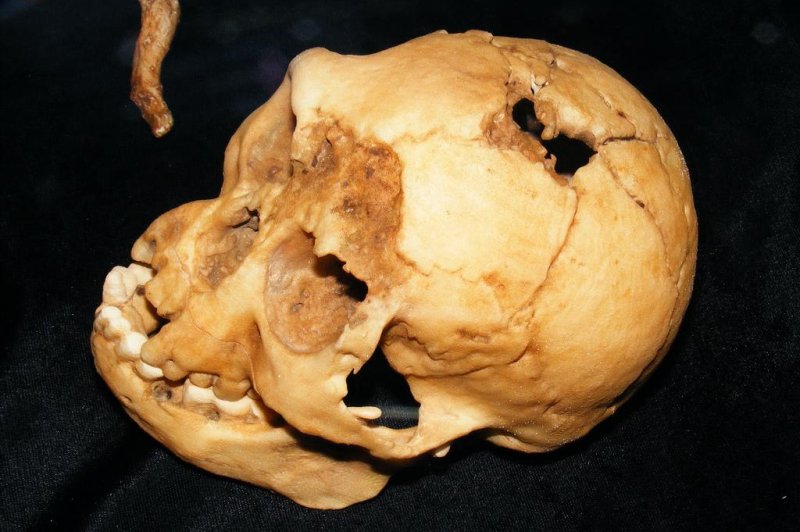1 of 2 | Top of the Flores skull. (CC/Ray)
COLLEGE STATION, Pa., Aug. 4 (UPI) -- In 2004, archaeologists found the remains of an ancient human in Flores, Indonesia, that some suggested was proof of a new species -- a relative of early man known as Homo floresiensis and dubbed the "hobbit."
But new research suggests the hobbit, or LB1, was not a small-brained relative of Homo erecutus nor "the most important find in human evolution for 100 years" -- but simply the remains a Homo sapien whose development was stunted by Down syndrome.
Although several specimens were initially unearthed during the discovery inside the Liang Bua Cave, only one had a complete cranium. Because the cranium -- as well as a pair of shortened thighbones -- were so small, scientists theorized the remains were evidence of a lineage of early humans different from the small people already established to have evolved on the islands of the South Pacific.
But a new, more accurate measurement of that cranium suggests it was not quite as small as scientists first claimed -- one of many factors that has cast doubt on the notion of the hobbit as a new species.
"The difference is significant, and the revised figure falls in the range predicted for a modern human with Down syndrome from the same geographic region," explained Robert B. Eckhardt, a professor of developmental genetics and evolution at Penn State.
With proof the skull and shortened thighbones were evidence of an abnormality and not unrealized genetic diversity, scientists concluded the rest of the bones belonged to a lineage of "small people" from the region.
The new research is actually two studies, both by international teams of scientists. Together, the studies are detailed in the latest edition of the journal PNAS.
"The Liang Bua Cave skeletal remains demonstrate the existence on Flores, Indonesia, of a small-bodied Australomelanesian population that conforms with its regional and temporal provenance," researchers explained in one of the two papers. "Against this background, the abundant pathological signs that mark cranial and postcranial morphology of the LB1 individual establish a very high probability of that specimen manifesting DS."
Furthermore, the scientists say, abnormalities were present in only one of the specimens found, further weakening claims of a new species.
"This work is not presented in the form of a fanciful story," Eckhardt said, "but to test a hypothesis: Are the skeletons from Liang Bua cave sufficiently unusual to require invention of a new human species?"
"Our reanalysis shows that they are not," he concluded.















